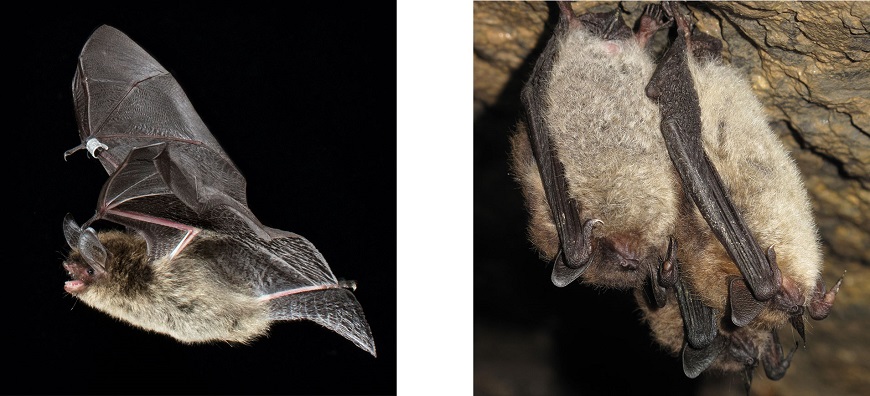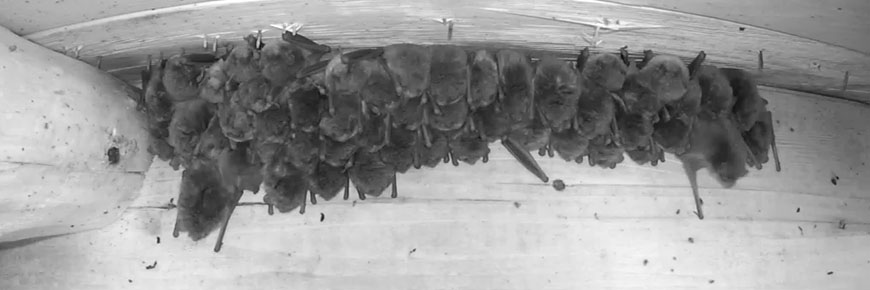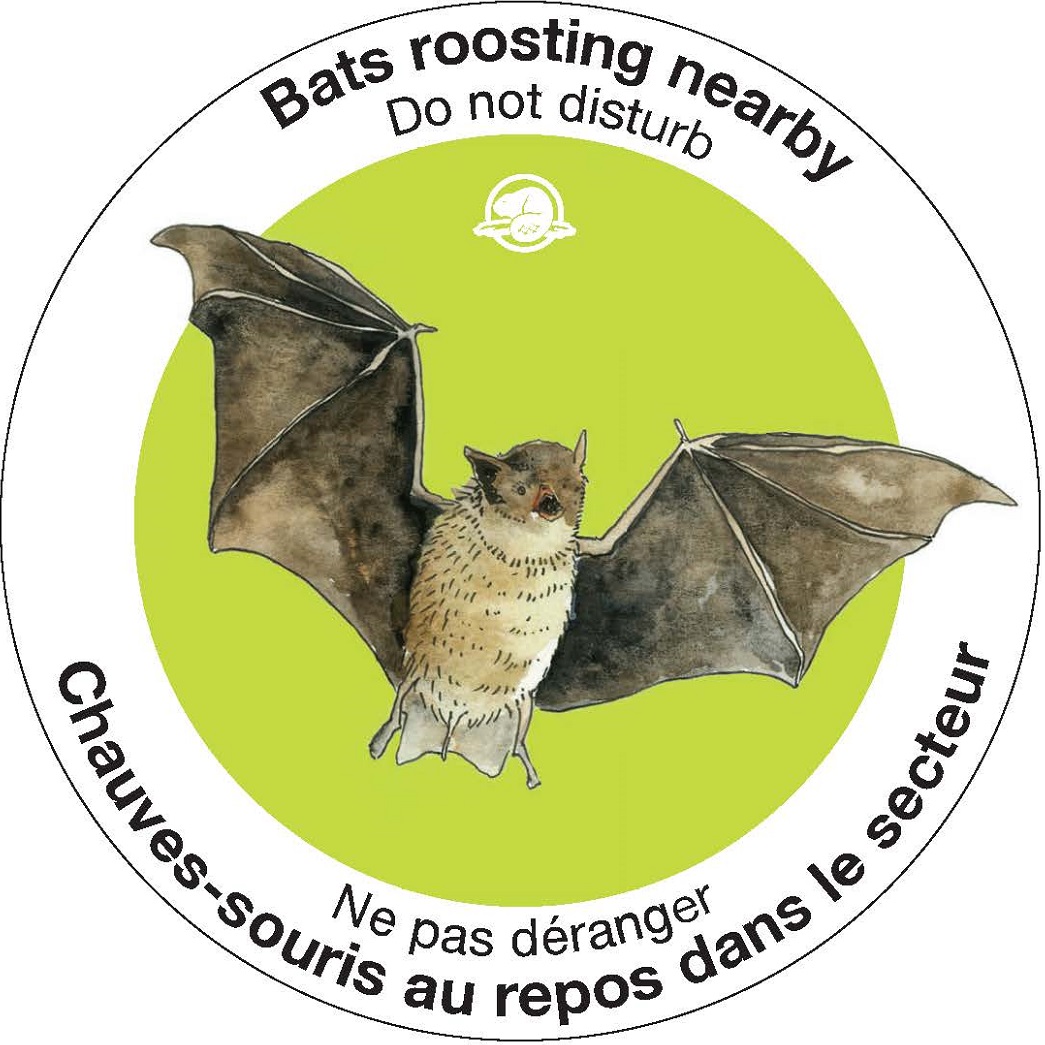
Bats: Little brown myotis and northern myotis
Jasper National Park
Quick facts
Eats insects
Navigates and hunts using excellent vision and echolocation
Likes to sleep — up to 20 hours a day
Weighs a little heavier than a loonie
Lives ~ 30 years
SARA Status: Endangered (Little brown myotis), Endangered (Northern myotis) (2014)
The little brown myotis (Myotis lucifugus) and northern myotis (Myotis septentrionalis) are two of eight bat species found in Jasper National Park. These two species look very similar, but the northern myotis has longer ears, a longer tail and bigger wings.
Bats are the only mammals that have the ability to fly! (I know what you are thinking, but flying squirrels only glide.)
While some bats in the world eat nectar, other animals, or fruit, all of Canada's bats are myotises (mouse-eared) that only eat insects. They can eat half their weight in insects per night, including mosquitoes, midges and mayflies. Bats have an important role in keeping forest insect populations in check and helping plants to pollinate and spread their seeds.

Where they live
At dusk, bats can be seen swooping over ponds or through streetlights. The places where they go to rest are called roosts. Bats often roost in attics or other hidden spaces in buildings. They also roost in tree cavities and hibernate in caves or abandoned mines over winter. Winter roosts are called hibernacula. Females roost in groups called maternity colonies where they raise pups.

Live feed of bats at the Palisades Stewardship Education Centre Live from May to August (best viewing June and July)
Jasper National Park Batcam: Moms and Pups
Why they are at risk
White-nose syndrome
The single greatest threat to the little brown myotis and northern myotis is white-nose syndrome. Bat populations in eastern North America have plummeted due to this fungal disease that is rapidly spreading westward. If the disease continues to spread at its current rate, all of Canada’s hibernating bats could be infected within 12 to 18 years.
White-nose syndrome is a fuzzy white fungus that appears on the nose, wings and ears of bats. It mainly impacts hibernating bats because it causes them to wake up more often, depleting their fat reserves. They may also leave hibernation too early and starve or freeze to death. The fungus spreads quickly from bat to bat and can kill up to 99% of bats at a site.
How we are helping
Monitoring
We identify which bat species live in Jasper National Park and estimate their population sizes using stationary ultrasonic bat detectors, microphones attached to vehicles (think bat-mobile), and guano (bat poop) lab analysis.
Jasper National Park contributes to North American Bat Monitoring Program (NABat) to monitor, manage, and support bat populations.
Identifying hibernation and roosting sites
Periodic monitoring at roosts is important for detecting white-nose syndrome.
Locating hibernaculum and maternity roost locations deepens our understanding and helps protect bats. For example, we discovered a crumbling entrance to a remote hibernaculum, and stabilized it using a culvert, maintaining access for the bats.
Preventing contamination
Parks Canada staff follow decontamination protocols when entering caves so that they don’t spread the fungus that causes white-nose syndrome.
It is illegal to enter any cave in Jasper National Park without written authorization from the Superintendent. Natural caves are critical habitat for some bat species, which use them to hibernate during winter.

Parks Canada uses roost loggers to identify important hibernation caves. Roost loggers have a microphone that records the calls of bats that over-winter in the cave. Staff return the following summer to remove the roost logger and analyze the data.
How you can help
If you find a dead, sick or injured bat in the park, report it to Parks Canada Dispatch at 780-852-6155, and a Resource Conservation Officer will respond. Do not touch or handle the bat or its roost. Visit our web page with essential information for residents and businesses.
Download a free do-not-disturb sign for bat roosts on your property. Either print it with your home printer on paper or cardstock or send the webpage link to your local sign shop and ask them to produce a durable outdoor sign. (17.78 cm diameter)

Learn more
Species at risk public registry - Species profile: Little Brown Myotis
Species at risk public registry - Species profile: Northern Myotis
Parks Canada: Bats in the mountain national parks
Parks Canada YouTube: Bats and white nose syndrome
Canadian National White-nose Decontamination Protocol
Canadian National White-nose Decontamination Protocol video
Mountain Parks Peak Discovery Series: Bats in the Belfry
- Date modified :